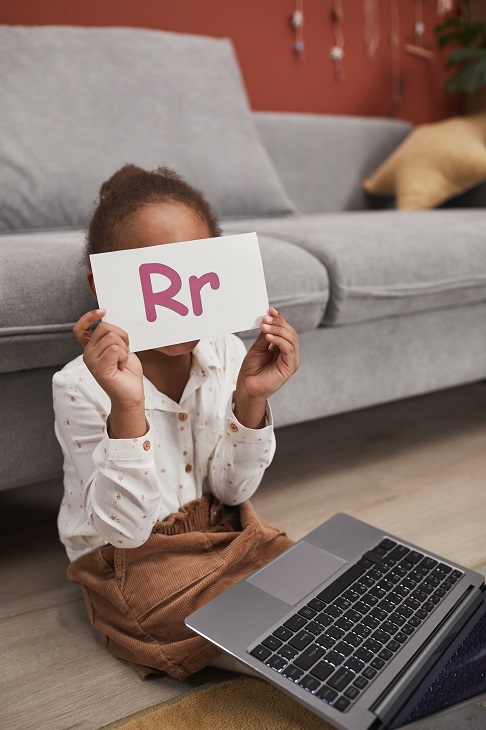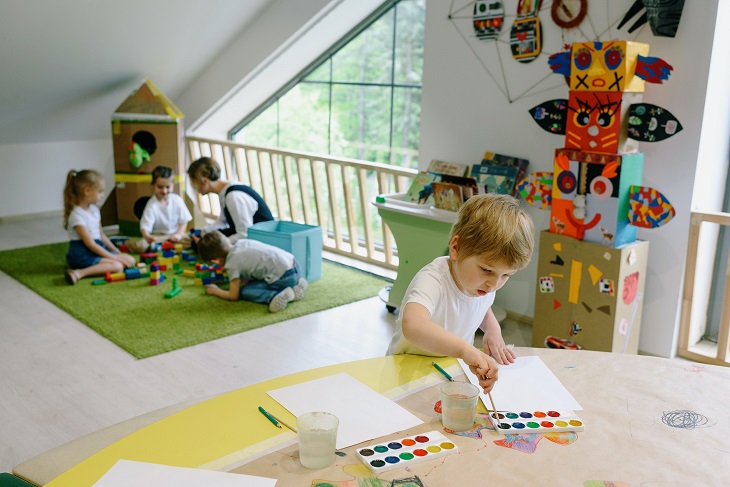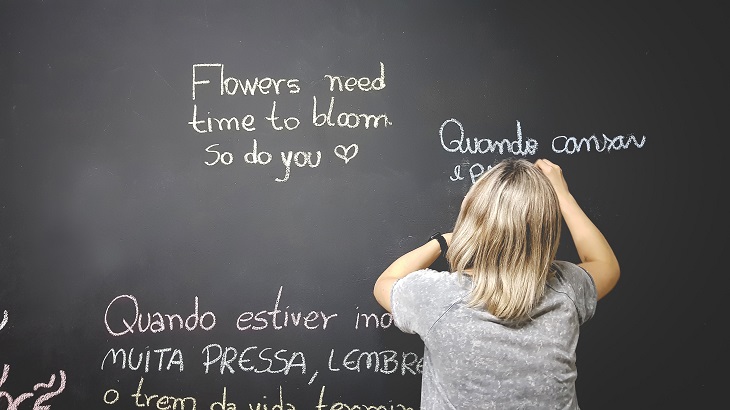Learning a new language isn’t easy, but flashcards are an excellent way to introduce your child to the task.
You could have plenty of reasons to start: overseas relatives, an inherent desire or a new way to productively spend time at home. No matter the reason, it’s a great choice to build such a valuable and enriching skill as early as childhood. By the time they’re ready to go out and explore new countries, your child will be a balanced and bilingual communicator of the globalized world!
What Are Spanish Flashcards?
Flashcards are an effective way to teach your children any new language. If you’re new to flashcards, they’re really quite simple: they’re a double-sided card bearing information to aid memorization. Each can feature a combination of text and pictures to illustrate a word or phrase. When deciding which flashcards to go for, consider the ones that work best with your child’s style of learning as well as the subject matter relevant to your level.
The cards use an elementary and age-old learning technique to assist children in learning and remembering information. It also helps youngsters in exploring, assessing and developing a passion for learning. It won’t be long before your child is soaking up knowledge and applying it in the long term.
Since educational flashcards have been used in education for many years, they’re an excellent tool to boost memory. They’re frequently used to introduce new subjects, including languages. You can easily begin to get used to the basics of any new subject, including languages, by including flashcards into your personal learning journey.
For example, when learning Spanish, flashcards could be small material with a word, picture or question on them that teaches the word or phrase. One side of the paper contains a Spanish word, and the other has the meaning or translation of the word. Although small, we make every inch of our flashcards count. We keep our packs both value-dense and beautifully illustrated so that there’s never a dull moment in your learning sessions!

How Do Spanish Flashcards Work?
Flashcard learning is a comprehensive strategy for developing a child’s cognitive and critical thinking skills. This is because it builds the groundwork for fast recollection of information from images. This configuration serves to boost both of a child’s cerebral hemispheres. It’s also linked to enhancing their learning capacity by assisting children in processing information in a pleasant and fascinating way.
When holding up a flashcard, it’s intended to elicit a quick reaction from the learner. For example, if you want to teach a certain word, you’ll use a flashcard that has both the word and its matching image. When you flip the card over, you’ll see the meaning of the word. This makes the pairing of image to word even easier.
Spanish flashcards are the appropriate method for learning Spanish words and phrases. When properly used, they aid in memory retention and improve the capacity to recall information later.
By exposing your child to a variety of vocabulary items and ideas – such as pronouns, numerals, and, in the case of Spanish vocabulary (for gender forms) – flashcards may also open the door to a deeper grasp of how the language functions.
After understanding the benefits of learning a second language for children, you’re probably wondering, “what is the best way to use Spanish flashcards to learn a second language?” Spanish flashcards will bridge that gap for you, and help your child learn a second language like Spanish more effectively!
How To Use Spanish Flashcards
It’s important to know how Spanish flashcards work to maximize their use in teaching your child. Understanding how Spanish flashcards work will help you teach your child more effectively.
Before we get into the method of teaching children with Spanish flashcards, there are things to consider when introducing Spanish flashcards to toddlers:
Size Of Spanish Flashcards
The size of the flashcards should be decided by the number of children being taught. The flashcard should always be large enough for all children to see, identify and remember. Ideally, all flashcards should be the same size and form.
Font Of Flashcard Text
Important details should be underlined in the text, and written in a legible font. For instance, rehearse the word’s sound by writing the first letter in a different color, like red. Put the word on the back of the flashcard so that learners must remember what the image on the card represents, rather than simply reading the word when they glance at it.
Laminate Your Cards
Laminate your flashcards to save time and avoid having to reproduce them after being worn or damaged. Laminated flashcards are resistant to bending and crumpling, making it simple to play any game imaginable by laying them on the ground or passing them about! Strong Minds’ durable cards cater to active kids who like to get handsy when they learn – you’ll never need to worry about spillages and tears!

Using Spanish Flashcards
When teaching kids, there are several ways to use educational flashcards. Figure out which flashcards are best for the child being taught first and start by arranging the flashcards in the proper order.
When dealing with youngsters, keep in mind that each interruption might result in the lesson slipping into distraction. With enthusiasm and – perhaps a little exaggeration – create some engaging ways to present the image to the child.
One way to do this is to play some fun Spanish music, as music helps to recall memories and other events. Pair the card with stimulating motions or noises, or anything that grabs their attention. Have them spellbound one way or another, and keep things light and imaginative!
Make sure the word is said loudly and clearly, and have the child echo it back to you a few times to practice your pronunciation. Make sure they pay close attention to your pronunciation before asking them to repeat. When uttering a word in front of more than one child, it’s not always possible to understand what you’re saying or they may not be keeping up, so be mindful that all participants are following along.
It’s also important to ensure that practice is steady and consistent. You could practice with the child every evening, or pop up the flashcards with games during the day. Repetition is key: you’ll need to present the information to the child many times for it to begin to stick.
A good way to teach a preschooler is to play games with them. Look for the best Spanish flashcards for kids and use them to play around with the kids. Play games with the child to motivate them even further! Flashcard games are great to hold kids’ attention and encourage them to speak out loud.
Play Flashcard Games
Below are three flashcard games they could play:
Slap the Floor
A timeless classic. The children can access the cards once you’ve spread them out on the ground or hang them from the board. They should strike the word with their hand as you yell it!
Bean Bag Toss
Lay down the flashcards face down on the floor for the bean bag toss. The bean bag is thrown, and the child calls out the flashcard it falls on.
Give Me
This one’s simple. Simply scatter the cards around the floor with the learner(s) on standby. Then ask for a specific card, such as the bus, train or cat. If all goes to plan, they’ll spring into action and seek out your request before eagerly slapping it back in your hand with a grin. This one works best when they don’t have pictures to help them out! With the kid-friendly sizes of all our cards, they should have no problem handing them over.

Games can be a great way to put some juice into your learning session and gamify the experience! There’s nothing kids love more than games, and if you can blend that into their learning you’re almost always going to have better results.
Flashcards are indispensable in learning languages, especially for children. Use them effectively to maximize your child’s learning of a second language.
Why Should You Learn Spanish?
Learning a second language is very beneficial. Spanish in particular opens up your children’s world, being the fourth most spoken language in the US, as well as the second most studied language in the EU. Having a second language like Spanish in their toolkit will open many doors and possibilities in their future!
Spanish is not difficult to learn as a second language, especially if your first language is English. Many terms in English, Spanish and other European languages have Latin roots. Since so many English terms, particularly scientific and technical terminology, share the same etymology, learning Spanish can help English speakers to not only increase their vocabulary, but also better understand the words in their own tongue.
The alphabets are the same, so it doesn’t take as much time to learn as other languages with their own alphabets. Most Spanish words are also phonetically spelled, which saves time learning difficult and perplexing spelling rules and increases the likelihood that pronunciation will be accurate.
The Magic Of Learning A Language On The Brain
Studies show the best time to learn a language is during the first 10 years of life. When a child is exposed to familiar sounds, the brain starts to develop the necessary neural network to adapt to them.
As the child learns new words and sounds, that network grows and ferments. Anything from interactions with family and friends to media like films and songs can begin to develop their native tongue.
Learning a second language has further effects on the way our brains function. The practice enables language acquisition to function as a mental exercise – building our mental acuity – and this aids in the development of a healthier overall system upstairs.

Children’s brains concurrently acquire a crucial skill called classification as they learn new knowledge. The brain organizes incoming information and stimuli into groups so that it may more quickly locate them when needed. Kids who have been exposed to a second language are particularly adept at classification. It’s necessary to be able to access a different vocabulary and syntax depending on the situation while using several languages. This fascinating ability extends to other schemas as well.
Learning a second language alters the brain’s anatomical structure. The relevant brain areas get stronger as a result of their functions in learning; this is mirrored in the growth of gray and white matter. There’s an ever increasing number of children learning multiple languages, according to The Guardian.
There are many benefits of learning a second language, as bilingual children are found to have:
- Enhanced mental acuity
- Better grasp of intellectual topics, more inventive and creative thinkers
- Improved knowledge of the local language
Dive into the world of fun and learning with Strong Minds Learning Labs, and browse our range of beautifully-designed Spanish flashcards! Our choice of 144 cards help children learn all things Spanish from math, language, shapes, colors and the alphabet. The durable design is made to endure session after session in great condition. Let’s start your kid’s journey to Spanish proficiency today!